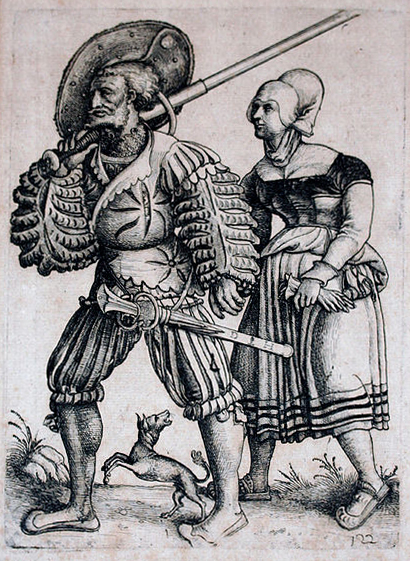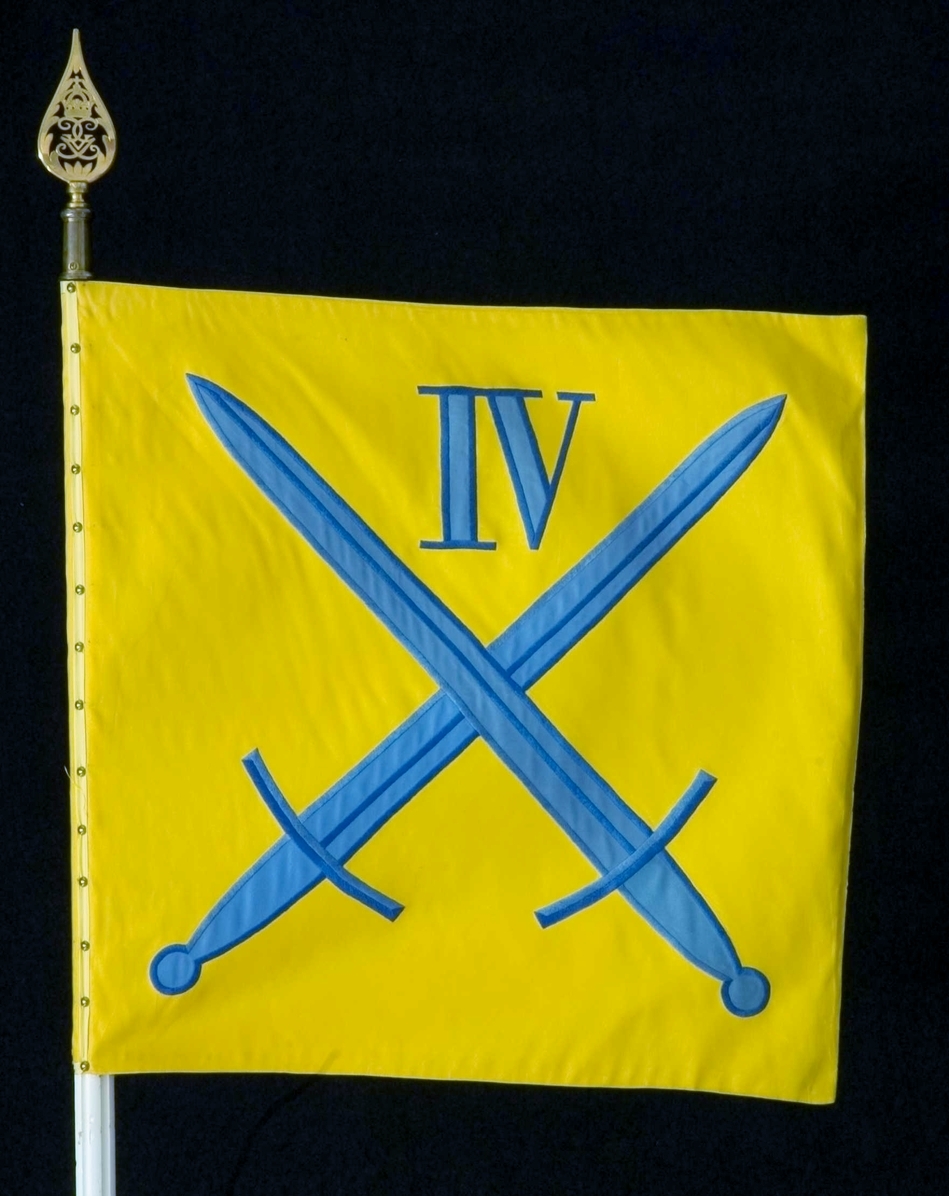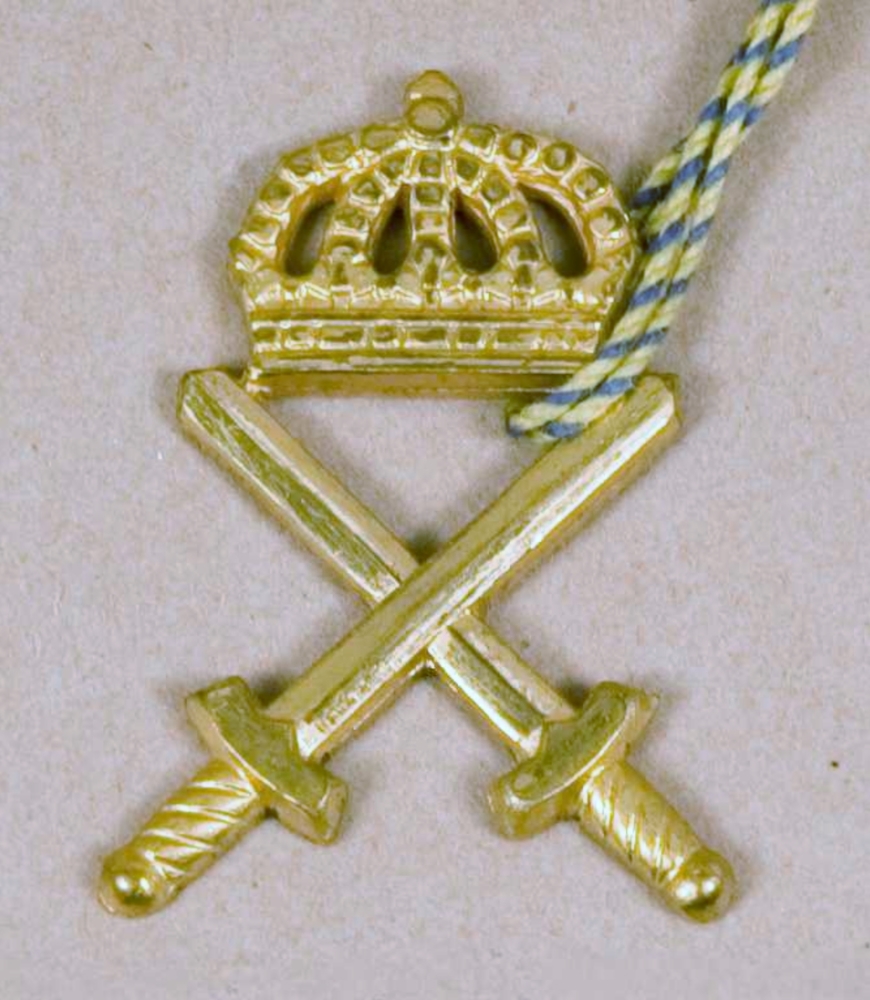|
Ulf Henricsson
Senior Colonel Ulf Hugo Henricsson (born 1February 1942) is a former Swedish officer. He is best known for his achievements in the Bosnian War as commander of the peacekeeping operations from September 1993 to April 1994. There he commanded the Nordic battalion (Nordbat 2) which was a part of the United Nations Protection Force (UNPROFOR). Early life Henricsson was born on 1 February 1942 in Engelbrekt Parish, Stockholm, Sweden. Henricson grew up on the farm Svarttorp south of Järna. Military career Early career Henricsson graduated from the Military Academy Karlberg in 1969 and was commissioned as an officer at the Göta Life Guards with the rank of second lieutenant. Henricsson attended the Swedish Armed Forces Staff College from 1979 to 1981 and served as a general staff officer and department chief in the Army Staff from 1981 to 1983. He was then company commander in the Svea Life Guards from 1983 to 1984 and commander of the Ground Operations Department in the staff o ... [...More Info...] [...Related Items...] OR: [Wikipedia] [Google] [Baidu] |
Vareš
Vareš ( cyrl, Вареш) is a town and municipality located in Zenica-Doboj Canton of the Federation of Bosnia and Herzegovina, an entity of Bosnia and Herzegovina. It is situated in central Bosnia and Herzegovina, and is famous for the local mining activities and production of iron. As of 2013, it has a population of 8,892 inhabitants, with 2,917 in the town itself. Geography Vareš is a mountainous town located 45 km from Sarajevo in the valley of the small Stavnja River 828 m above sea level surrounded by the massive high Kapija, Stijene, Zvijezda and Perun Mountains, named after Perun / Перун, the highest god of the Slavic pantheon (Perkūnas/ Perkons). The town is rich with archeological findings from different epochs – on several surrounding locations are found remains of prehistorical period, such as copper artifacts in Brgula. In the town center itself, there is an old stone bridge that resembles to the majority of one arched bridges from Ottoman period. Th ... [...More Info...] [...Related Items...] OR: [Wikipedia] [Google] [Baidu] |
Engelbrekt Parish
Engelbrekt Parish ( sv, Engelbrekts församling) is a parish in Östermalm's church district (''kontrakt'') in the Diocese of Stockholm, Sweden. The parish is located in Stockholm Municipality in Stockholm County. The parish forms its own pastorship. History Engelbrekt Parish was formed on 1 May 1906 (by decision of 15 April 1904) through an outbreak of Hedvig Eleonora Parish. The parish has composed its own pastorship since 1 May 1906.} Location Engelbrekt Parish includes covers an area from the northern tip of Ålkistan, the eastern tip of Värtahamnen and the southern tip of Stureplan. The border with Stockholm City Centre follows Tegeluddsvägen, Lidingövägen, Brahegatan and Birger Jarlsgatan Birger Jarlsgatan is one of the longest streets in central Stockholm, Sweden. The street forms the border between Östermalm and the two neighbouring districts Norrmalm and Vasastaden. It is named after Birger Jarl since 1885, then "Birger J .... References External links ... [...More Info...] [...Related Items...] OR: [Wikipedia] [Google] [Baidu] |
Tross
The was the camp follower contingent of the Landsknecht mercenary regiments which originated at the end of the fifteenth century, and were the dominant form of infantry mercenary force throughout the sixteenth century. Each unit traveled with a contingent, which followed behind. They carried the military and fighting necessities, the food and the belongings of each "Soldat" ("soldier") and his family. Members of the were made up of women, children, craftsmen and day laborers. The term "support staff" can be used to give the German word a clearer meaning, although its true English translation is "unit train" or "baggage train". Sometimes spelled ''Dross'', the term derives from Middle High German ''trosse'', from French ''trousse'' ("kit"); it is not related to English ''dross'' (Old English ''drōsna, drōsne'', "dregs, sediment"). Many women of the were wives of the soldiers, or other family members such as sisters, nieces, or daughters. Some of the women were betrothed to a ... [...More Info...] [...Related Items...] OR: [Wikipedia] [Google] [Baidu] |
Staff (military)
A military staff or general staff (also referred to as army staff, navy staff, or air staff within the individual services) is a group of officers, enlisted and civilian staff who serve the commander of a division or other large military unit in their command and control role through planning, analysis, and information gathering, as well as by relaying, coordinating, and supervising the execution of their plans and orders, especially in case of multiple simultaneous and rapidly changing complex operations. They are organised into functional groups such as administration, logistics, operations, intelligence, training, etc. They provide multi-directional flow of information between a commanding officer, subordinate military units and other stakeholders.PK Mallick, 2011Staff System in the Indian Army: Time for Change Centre for Land Warfare Studies, New Delhi, vol 31. A centralised general staff results in tighter top-down control but requires larger staff at headquarters (H ... [...More Info...] [...Related Items...] OR: [Wikipedia] [Google] [Baidu] |
Mechanized Infantry
Mechanized infantry are infantry units equipped with armored personnel carriers (APCs) or infantry fighting vehicles (IFVs) for transport and combat (see also mechanized force). As defined by the United States Army, mechanized infantry is distinguished from motorized infantry in that its vehicles provide a degree of armor protection and armament for use in combat, whereas motorized infantry are provided with "soft-skinned" wheeled vehicles for transportation only.Infantry Division Transportation Battalion and Transportation, Tactical Carrier Units. (1962). United States: Headquarters, Department of the Army. p. 15 Most APCs and IFVs are fully tracked or are all-wheel drive vehicles (6×6 or 8×8), for mobility across rough ground. Some nations distinguish between mechanized and armored (or armoured) infantry, designating troops carried by APCs as mechanized and those in IFVs as armored. The support weapons for mechanized infantry are also provided with motorized transport ... [...More Info...] [...Related Items...] OR: [Wikipedia] [Google] [Baidu] |
Dagens Nyheter
''Dagens Nyheter'' (, ), abbreviated ''DN'', is a daily newspaper in Sweden. It is published in Stockholm and aspires to full national and international coverage, and is widely considered Sweden's newspaper of record. History and profile ''Dagens Nyheter'' was founded by Rudolf Wall in December 1864. The first issue was published on 23 December 1864. During its initial period the paper was published in the morning. In 1874 the paper became a joint stock company. Its circulation in 1880 was 15,000 copies. In the 1890s, Wall left ''Dagens Nyheter'' and soon after, the paper became the organ of the Liberal Party. From 1946 to 1959, Herbert Tingsten was the executive editor. The newspaper is owned by the Bonnier Group since 1909, when Karl Otto Bonnier acquired the remaining shares that his family had not owned (his father Albert had already acquired some shares since 1888). [...More Info...] [...Related Items...] OR: [Wikipedia] [Google] [Baidu] |
Yugoslavia
Yugoslavia (; sh-Latn-Cyrl, separator=" / ", Jugoslavija, Југославија ; sl, Jugoslavija ; mk, Југославија ;; rup, Iugoslavia; hu, Jugoszlávia; rue, label=Pannonian Rusyn, Югославия, translit=Juhoslavija; sk, Juhoslávia; ro, Iugoslavia; cs, Jugoslávie; it, Iugoslavia; tr, Yugoslavya; bg, Югославия, Yugoslaviya ) was a country in Southeast Europe and Central Europe for most of the 20th century. It came into existence after World War I in 1918 under the name of the ''Kingdom of Serbs, Croats and Slovenes'' by the merger of the provisional State of Slovenes, Croats and Serbs (which was formed from territories of the former Austria-Hungary) with the Kingdom of Serbia, and constituted the first union of the South Slavic people as a sovereign state, following centuries in which the region had been part of the Ottoman Empire and Austria-Hungary. Peter I of Serbia was its first sovereign. The kingdom gained international recog ... [...More Info...] [...Related Items...] OR: [Wikipedia] [Google] [Baidu] |
Combat Vehicle 90 (CV90)
The Combat Vehicle 90 (CV90; Sw. ''Stridsfordon'' 90, Strf90) is a family of Sweden, Swedish tracked combat vehicles designed by Sweden's Defence Materiel Administration (''Försvarets Materielverk'', FMV), BAE Systems AB, Hägglunds and Bofors during the mid-1980s to early 1990s, entering service in Sweden in the mid-1990s. The CV90 platform design has continuously evolved in steps from Mk0 to current MkIV with advances in technology and in response to changing battlefield requirements. The Swedish version of the main infantry fighting vehicle (IFV) is fitted with a turret from Bofors that is equipped with a Bofors 40 mm Automatic Gun L/70, 40 mm Bofors autocannon. Export versions are fitted with Hägglunds E-series turrets, armed with either a Mk44 Bushmaster II, 30 mm Mk44 or a Bushmaster III, 35 mm Bushmaster autocannon. Developed specifically for the Nordic subarctic climate, the vehicle has very good mobility in snow and wetlands while carrying and supporting eight, ... [...More Info...] [...Related Items...] OR: [Wikipedia] [Google] [Baidu] |
Skaraborg Regiment (armoured)
The Skaraborg Regiment ( sv, Skaraborgs regemente), designation P 4, is a Swedish Army armoured regiment that traces its origins back to the 16th century. It was converted from an infantry regiment in 1942. The regiment's soldiers were originally recruited from Skaraborg County, and it is currently garrisoned in Skövde, in the former Skaraborg County. History The regiment was converted from an infantry regiment to an armored regiment in 1942 and was given the name Skaraborg Armoured Regiment. The regiment was given the designation P 4 (4th Armoured Regiment) and was garrisoned in Skövde. On 1 April 1963, it regained its old name of the Royal Skaraborg Regiment. In 1974, the regiment gained the new designation P 4/Fo 35 as a consequence of a merge with the local defence district Fo 35. For a short time in the 1990s, the unit was then merged with the wartime organised Skaraborg Brigade (MekB 9). In accordance with that year's Defence Act, the unit was reorganised once again in 20 ... [...More Info...] [...Related Items...] OR: [Wikipedia] [Google] [Baidu] |
Eastern Military Area
Eastern Military District ( sv, Östra militärområdet, Milo Ö), originally IV Military District ( sv, IV. militärområdet) was a Swedish military district, a command of the Swedish Armed Forces that had operational control over Eastern Sweden, for most time of its existence corresponding to the area covered by the counties of Östergötland, Södermanland, Stockholm, Uppsala and Västmanland. The headquarters of Milo Ö were located in Strängnäs. History Milo Ö was created in 1966 along with five other military districts as part of a reorganisation of the administrative divisions of the Swedish Armed Forces. It can be seen as the successor of IV Military District (''IV. militärområdet'') created in 1942, but that did not have the same tasks as Milo Ö. The military area consisted of the land covered by the above-mentioned counties, and from the creation to 1982, also the southern part of Gävleborg County. In 1991, the number of military districts of Sweden was decreased ... [...More Info...] [...Related Items...] OR: [Wikipedia] [Google] [Baidu] |
Army Staff (Sweden)
Army Staff ( sv, Arméstaben, Ast) is the staff of the Chief of the Swedish Army. It was originally established in 1937. The Army Staff's duties then included, among other things to assist the Chief of the Army with leadership of the Army's mobilization, training, tactics, organization, equipment and personnel to the extent that such activity was not directly related to operational activities, which was handled by the Defence Staff. In 1994 the Swedish Armed Forces Headquarters took over the Army Staff's duties. In 2019, the Army Staff was re-established, now located in Enköping Garrison. History 1937–1963 On 1 July 1937, the position of Chief of the Army (''Chefen för armén'') was established. The Chief of the Army would under the King in Council exercise the highest military leadership of the country defence. At his side, the Chief of the Army had an Army Staff to assist the Chief of the Army in his duties. Within the Army Staff the work was initially conducted in the f ... [...More Info...] [...Related Items...] OR: [Wikipedia] [Google] [Baidu] |
Swedish Armed Forces Staff College
The oyalSwedish Armed Forces Staff College ( sv, Militärhögskolan, MHS) was from 1961 to 1996 the Swedish Armed Forces highest institution for officers training, for staff and senior executive education and was located in Stockholm. In 1997 it was merged with the Swedish National Defence College and formed the "new" Swedish National Defence College. History During the first part of the 20th century, the higher officer education was developed in the three military branches, the Army, Navy and Air Force. During the two world wars a variety of new weapons such as armor, air, gas, submarines and nuclear weapons were introduced. Then came the Cold War, which contributed so that the higher officer training at the Royal Swedish Army Staff College, the Royal Swedish Naval Staff College and the Royal Swedish Air Force Staff College in 1961 were merged into a joint staff college, named the Royal Swedish Armed Forces Staff College. The operations began on 1 October 1961 and the first in ... [...More Info...] [...Related Items...] OR: [Wikipedia] [Google] [Baidu] |







